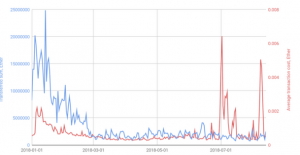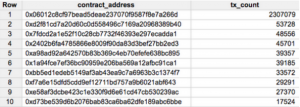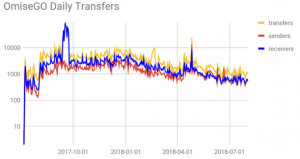
Recently, Google dedicated its Big Data Analytics Platforms, like BigQuery and Cloud’s Petabyte-scale to Ethereum blockchain in a bid to facilitate the exploration of smart contract analytics.
Easy Exploration of Ethereum’s Historical Information
BigQuery has enabled the exploration of Ethereum blockchain’s historical information. Ethereum’s ETL scheme on GitHub comprises of all source codes, which can be mined from the blockchain and coded into BigQuery. Google is in search of extra contributors and blockchains.
Facilitating Data Availability of Blockchain
The primary motive behind making Ethereum blockchain’s data available on Google Cloud is to facilitate easy accessibility of all the data kept in the blockchain. Although Ethereum’s software has APIs for roles that can be retrieved easily, for instance checking wallet balances, its API endpoints are not open to each data warehoused on the blockchain. Accessibility backups like prioritizing modifications in the Ethereum data are highly needed.

Advanced Coordination and Regular Data Extraction
The blog post highlighted that Google Cloud can coordinate the Ethereum blockchain with machines having Parity- an Ethereum client for creating apps.
Google Cloud can also obtain information regularly from the Ethereum ledger, like token transactions, and keep partitioned data for effective examination on BigQuery.
Facilitation of Smart Contract Analysis
Google BigQuery has already facilitated examination of smart contract function calls, operation frequency and smart contract operation analysis.
BigQuery has exemplified interaction with the contract tables and dataset operations to establish the common smart contracts in terms of number of transactions done. The chart below depicts the 10 commonest Ethereum ERC-721 contracts by operations.

The Cryptokitties game smart contract is the commonest ERC-21 smart contract. When a user wants to explore a game like Cryptokitties, they can quantify this by arranging the Jaccard identity coefficient- a method applied in equating the range and likeness of samples using a JavaScript UDF.
A second query estimates the 10 most preferred tokens by transaction capacity.

We can quantify a token by time frame, for example, the daily number of token transactions for a specific token and generate an image of the data for a particular time frame, as illustrated above.
The Endless Visualization Possibilities
Users can also employ a directed data structure to gain a better understanding of the information since it comprises a set of transactions among wallet addresses.
Generally, Google Cloud is greatly driving smart contract analytics via BigQuery.


